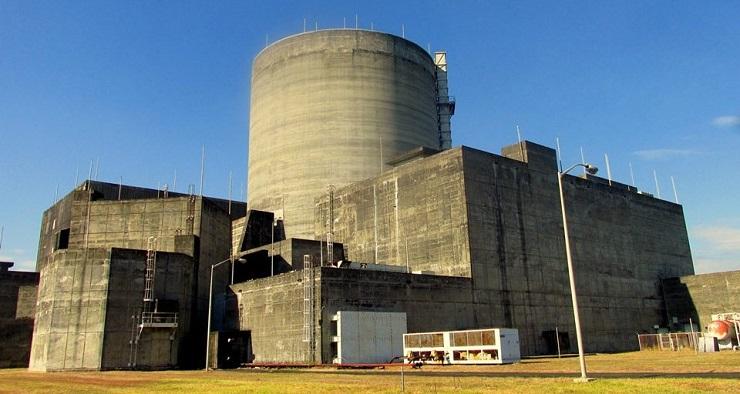ASIACALLING
Philippine President considers plans for controversial nuclear power plant

Philippine President Rodrigo Duterte has given the green light to the energy secretary to re-study the dormant Bataan Nuclear Power Plant to address the country’s power needs.
The 2.3 billion dollar plant built during the years of former dictator Ferdinand Marcos has been controversial for decades. The plant was built in the 1970s, but after Marcos fell, the plant never ended up opening.
Madonna Virola has this report from the city of Calapan.
Energy secretary Alfonso Cusi recently announced that President Rodrigo Duterte has given the green light to re-examine the Bataan Nuclear Power Plant, about 100 kilometers west of Manila.
The country needs to create more than 30,000 megawatts of energy by 2030 and the government is assessing whether they might open the defunct plant.
Cusi makes the case that the plant was supposed to have opened in 1977.
“Had we opened that, probably, our life could have been different. After almost 40 years, is there anything that happened? Don’t you think it’s a loss opportunity for us?” Cusi appealed.
Even though the plant has never been used Manila spends half a million US dollars each year to maintain the plant.
Politician Mark Cojuangco has been a long time supporter of the plant and explains why it was built in the first place.
“The Bataan Nuclear Power Plant was thought of in the late ‘70s in reaction to the first oil crisis. Oil prices skyrocketed that first time and caused economic turmoil all over world.”
Cojuangco continued, “because most of our power generating capacity outside of hydroelectric was fossil-oil based, the government thought that nuclear was the answer. They thought that at the same time that other countries, with same problem, started investing heavily in nuclear power generation.”
The Bataan Nuclear Power Plant was completed in 1984, but years later it still hadn’t opened.
Under President Corazon Aquino, and with the Chernobyl nuclear disaster in the Ukraine in 1986, nuclear power started to look much less safe.
Then there was the disaster with the Fukushima power plant in Japan in 2011, after it was hit by a tsunami. And released tons of harmful radioactive material.
I visited the Bataan Nuclear plant on an educational tour several years ago.
Located on a 357-hectare government reservation, the plant was built on a site considered geologically hazardous, near Mt. Pinatubo volcano.
At the time, then-plant manager Mauro Marcelo, who has since retired, was very positive about the project.
“You’ll see uranium is most abundant on earth. Even if you use a huge amount, it practically doesn’t contribute to global warming. Carbon dioxide generation from wind, solar and biomass are even much more than nuclear,” claimed plant manager Marcelo.
Activist Francis Joseph dela Cruz recently joined protests against the burial of late dictator Ferdinand Marcos, at the Heroes Cemetery in Manila.
The Bataan plant, he says, is another hangover, a failure of the Macros government and the years of martial law.
“It’s a formula for projects gone wrong, conceived during the dark days of Martial Law. Forget about public consultation, it was a product of crony capitalism, like a friend of the administration had a big commission from the original equipment manufacturer.
Dela Cruz went on, “what makes it worse is its a technology that we don’t have a lot of experience in, also there are a lot of experiences worldwide that points to the negative side of it.”
Securing public support for reopening the plan could be a challenge.
Writer and environmentalist Agnes Prieto says the Philippines should instead focus on developing safer renewable sources of energy.
“They should study it more closely because in the past, it was negated and another administrations have not taken it up, so there must have been really a very good reason for that.”
“I think this is a decision that has to be more seriously considered, with more analysis, and maybe a referendum should be taken among the people who will be affected,” Prieto said.
Congress is ready to discuss the pros and cons of the Bataan Nuclear Power Plant, including the estimated $1 billion needed for rehabilitation.
Before that happens an intensive study will be undertaken by a newly created government body to assess whether the plans should go forward.
- Madonna Virola
- nuclear power
- Bataan Nuclear Power Plant
- President Duterte
- Philippines nuclear
- climate change
Komentar (0)
KBR percaya pembaca situs ini adalah orang-orang yang cerdas dan terpelajar. Karena itu mari kita gunakan kata-kata yang santun di dalam kolom komentar ini. Kalimat yang sopan, menjauhi prasangka SARA (suku, agama, ras dan antargolongan), pasti akan lebih didengar. Yuk, kita praktikkan!